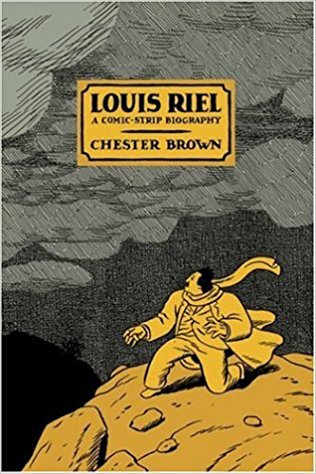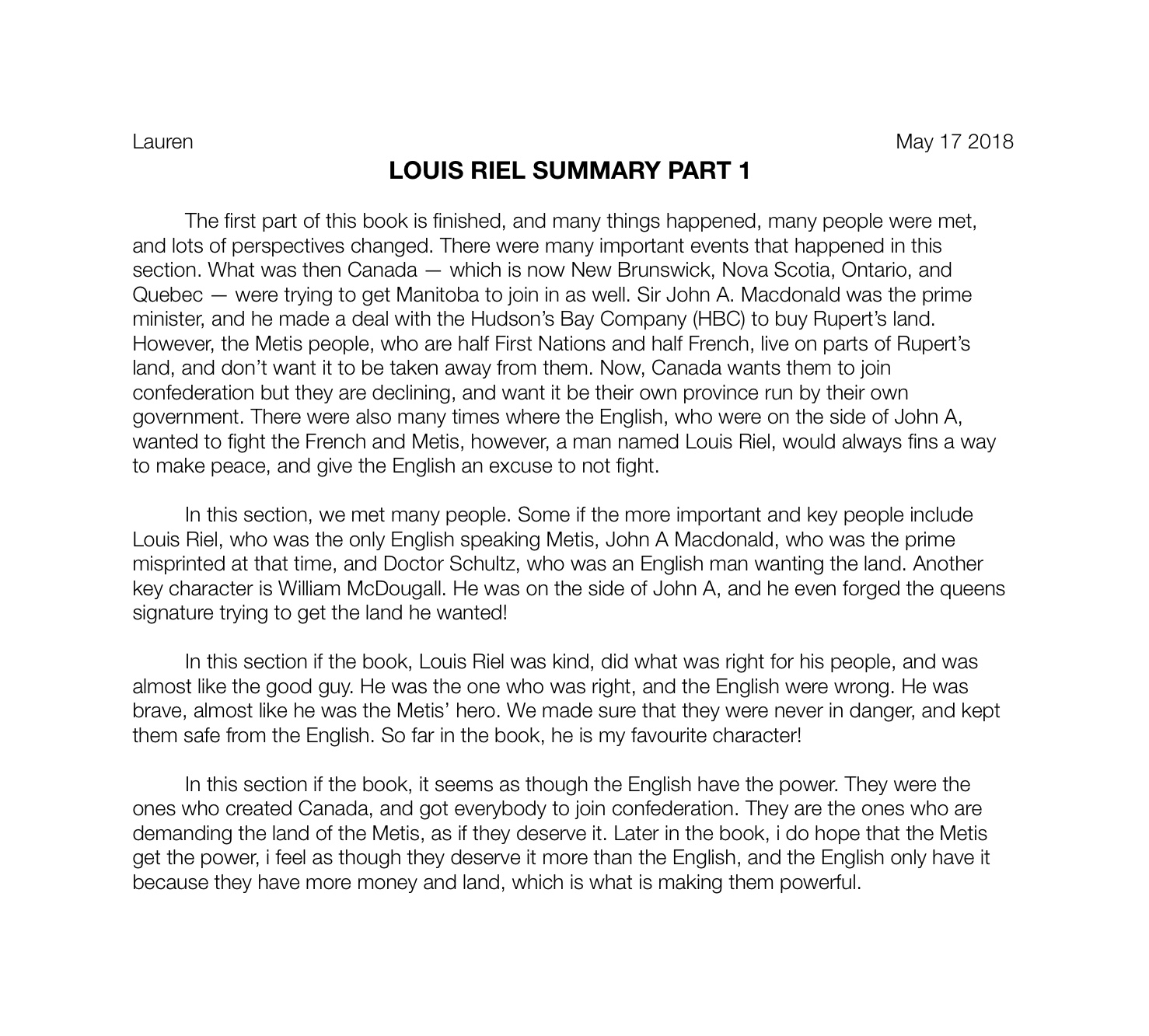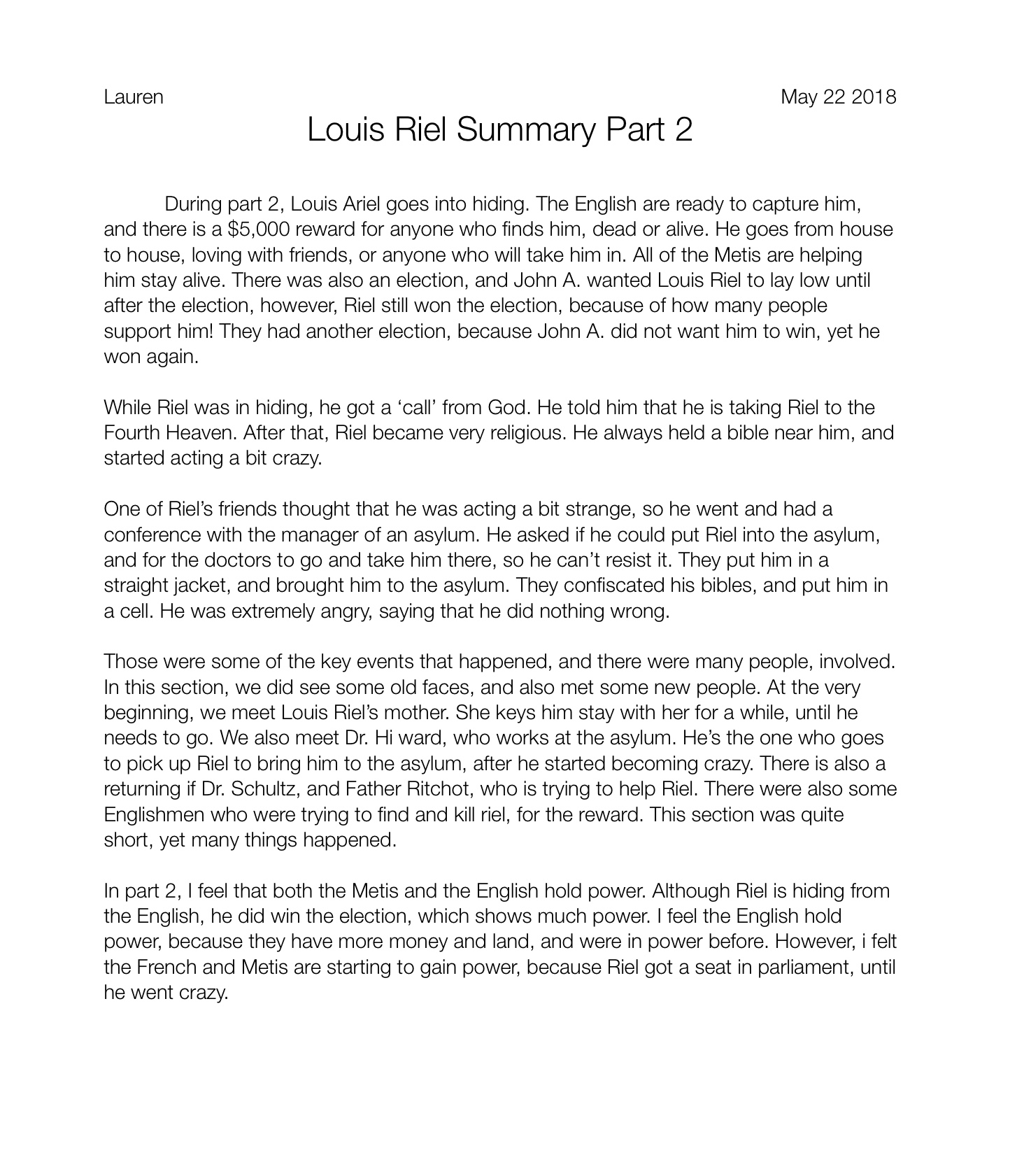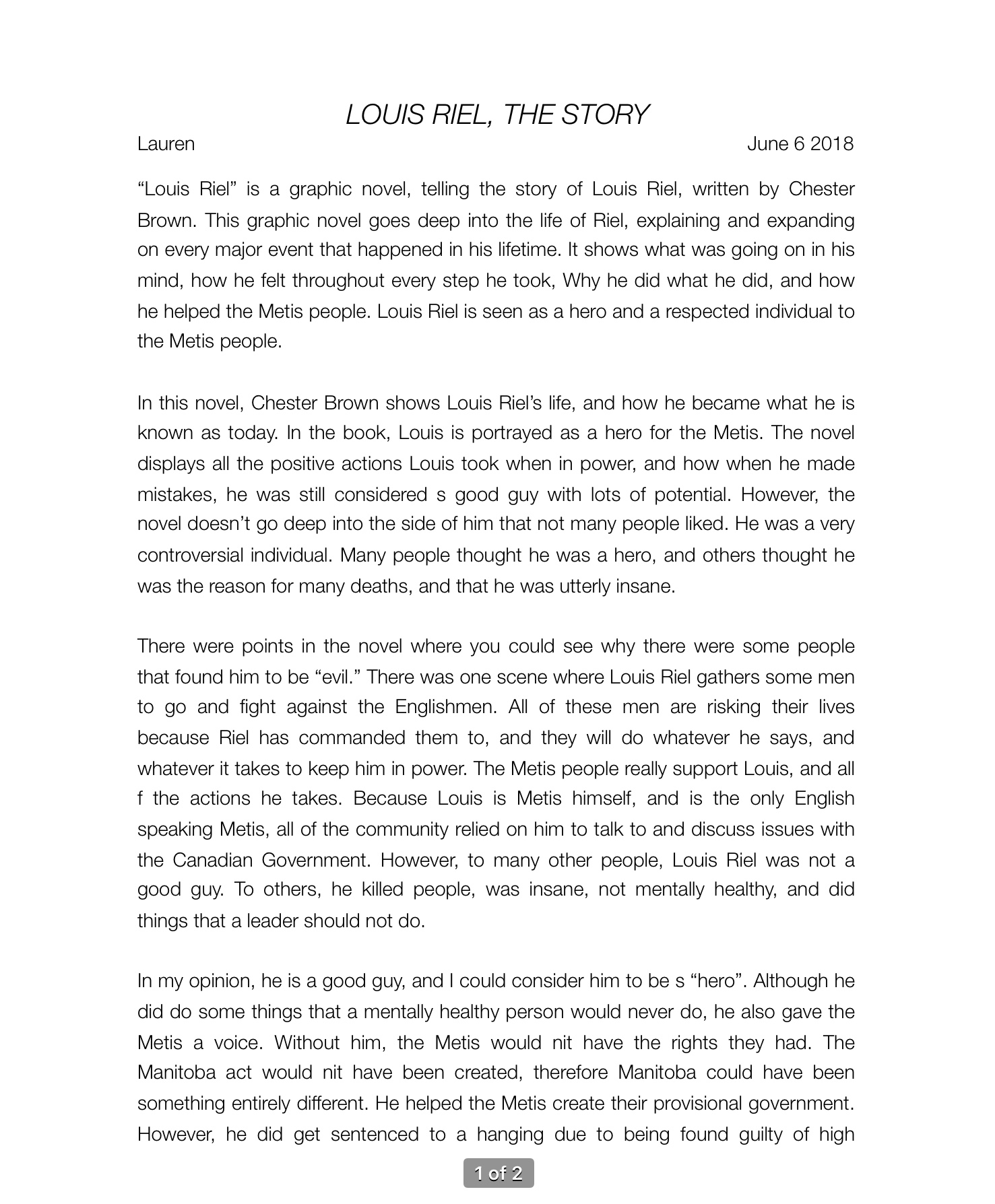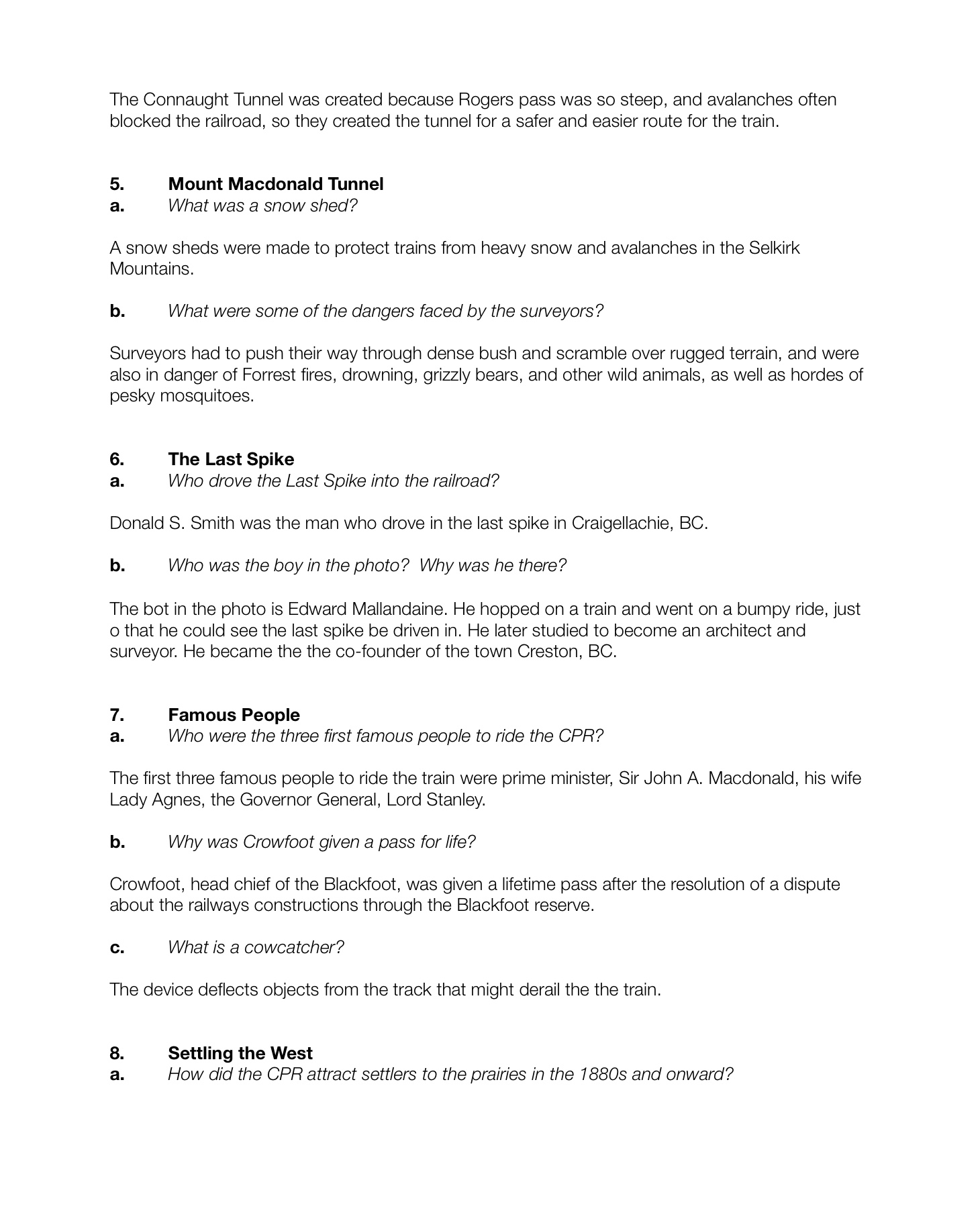Louis Riel, Hero or Villian?
TIt’s finally come down to it. Our final humanities project. For this final unit, we have gone back in time to before World War One. We went to about the 1800’s, when a man named Louis Riel stepped up and gave a voice to the Metis people.
Louis Riel was a Metis person. Metis people are people who half french and half First Nations. These people have been living in what is now Manitoba. Louis Riel was the only English speaking Metis, so he was the one who stepped up when it came to talking with the English. Before we get into all of that, let me start at the beginning of this unit.
Our driving question was ‘How do disparities in power alter relationships?’ . This was the question that in every assignment and throughout the project, we would always come back to. This question was probably my favourite one this year, although it was also one of the most challenging ones we have had. This project lasted 3 weeks, so rather than explaining everything in a random order, I am going to take you step by step through the process of making our final project.
First I will give you a small overview of what this project was. We were to make an animation about an individual that either empowered or disempowered a specific group of people. The only rule, it had to be pre-WWI. The group of people I decided to work with were black immigrants, specifically in the 1830s-1850s. Most of these immigrants escaped slavery in the United States, and came to Canada to start a new life in freedom.
STEP ONE: The Book
Chester Brown’s Louis Riel is a graphic novel explaining Louis Riel, who he was, what he did, and overall his life and how he became in power. We read this novel throughout the project, finishing it before we the final project was due.
The book was split into 4 parts, and for each part we completed a summary. However, each summary was different. The first 2 summaries were written paragraphs explaining and reflecting on the part we had read.
The third summary we completed was a short animation, just to explore he different apps and see what will work best for ourselves. For the summary, i made my animation using keynote magic moves. However, i didn’t end up using that for my final animation. Instead, I used an app called flip a clip.
For the fourth summary, we wrote a multi paragraph written summary about the whole book, and answering our driving question.
STEP TWO: Assignments
Now I’m not going to list every single assignment the we competed, it I will show you the main assignments that we did over the unit.
One of the first assignments we did was called Who Are The Metis Notes. With this, we went onto a website that was an interactive game in which we learned about the red river and answered questions.
Another assignment we completed was CPR jigsaw activity. In this activity, we went around the room looking at sheets of information, and from those we answered the questions we were assigned. This activity was to help us with finding information, and making sure you don’t miss any info that is important.
We also learned about the Manitoba Act. This was the reason Manitoba was created. The Manitoba Act stated that Métis lands would be protected but all other lands were the property of the Dominion of Canada. The Métis could not get legal title to their lands until Dominion surveyors had finished sectioning the land.
The final assignment we did was a Quick Write about our animation. We were to explain out animation, and the time it took us to finish it, within a multi paragraph summary. This assignment was to be done in 15 minutes, so it was pretty difficult.
STEP THREE: Topic
Now, it is time to choose our animation topic. I decided to pick Black Immigrants as my topic. My main individual is a man named Josiah Henson. I’ll just give a short summary of his story, so that you can hear the full story in my final video(which is later in this post). Josiah Henson was enslaved at a young age. He escaped to Canada with his family, and created a settlement in Ontario. I chose to create my video about him because I feel that his story was very influential and important.
STEP FOUR: Story + Story Board
Before we start our animation, we needed to create and story and a story board. First, we gathered our facts for the story. Then, we created a story for the animation, that we also used as our script. Afterwards, we took that story, and created a storyboard.
STEP FIVE: Drafts
Now, we are all ready for our animation. Using flip a clip, I first started with creating 40 seconds of the video. This app Is an animation app where you draw each frame. I created my animation with 3 frames per second. My first draft had about 150 frames, all hand drawn. This animation took lots of time and patience.
My second animation was almost fully done, with all of the voice over finished.
STEP SIX: Final Draft
My final draft ended up being 2 minutes and 45 seconds. I am very proud of my final draft. I put many many hours into it, and I feel that it is shown in the animation. My finals draft really reflects on our driving question, and really wraps up the unit.




